The Top 10 Best Medical Schools to Look at

If you want to be a doctor someday, you're not alone. Many consider medicine to be one of the most prestigious fields out there. Physicians gain respect for their intelligence, status, and ability to improve people's lives. However, there are many things to consider along the way. You need to make sure that you can get into medical school before becoming a doctor. Additionally, you should make sure that the medical school you attend is the among the best medical schools possible for your goals.
Although it may be extremely difficult to get into any medical school (only about 10 percent of students get into any medical school in any given year), it is worth looking at which universities have the best medical schools and what they have to offer. Whether or not you end up going to one of the so-called best medical schools, you should use them as examples of the types of programs you will want to involve yourself with when you enroll.
How to Choose from Among the Best Medical Schools
When you are making a choice between all of the best medical schools available, you should take into account how likely it is that you will get into any given school and what programs the schools offer.
Making yourself an impressive applicant
When you're applying for medical school, it is important to remember just how competitive it is. Especially when you are looking at the best medical schools, you need to remember that no one is guaranteed a spot in the next class, no matter what their credentials. As such, if you really have your heart set on a certain school, you need to make sure that you are appealing to that school in the best way possible. You need to present yourself in a way that is not only impressive but also stands out from the rest of the pool of applicants.
College GPA
There are a few factors that you may not be able to control, such as your college GPA. If your GPA is lower than you would have liked, that is one factor you will have to work with. Medical schools consider GPA very important. Though some students opt to go into an MS program to raise their science GPA and apply to med school afterward, there is no guarantee that this will help your chances.
MCAT scores
MCAT scores are also very important, so if you have not taken this test yet, it is important to make sure you are adequately prepared. The majority of the best medical schools do not have specific numbers in terms of cut-offs for these parameters, but generally, the higher, the better. You should probably make sure that your GPA and MCAT score are at least in the ballpark of the average range of the school to which you want to apply.
Extracurricular activities and standing out
In addition to these basic numerical parameters, you likely want to have aspects of your application that stand out. You want the medical schools to which you apply to know who you are as a whole person, not just in terms of the numbers. Letting the best medical schools know about any leadership positions you have held or any volunteer positions about which you were passionate will likely boost your application.
Important criteria when choosing a medical school
There are many criteria to keep in mind when choosing a medical school. One is your eligibility, meaning how likely you are to get into the school of your choice. Since application fees are fairly high, it's a good idea to make sure that your scores and grades are high enough that you have a real chance of being accepted. Additionally, you should make sure that you have all of the prerequisite courses completed. The list of courses that you need to complete will be different for some of the best medical schools, so it is essential to look into this before applying.
Also, you should look at the positive qualities of the school. You want to make sure that the location is somewhere you can see yourself living for four years and that it is the type of environment that will nurture your growth as a human being as well as a physician. It will improve your experience if the environment is supportive and gives you the opportunity to develop personal interests. It would also be good to make sure that the program is financially feasible for you. You should keep in mind the types of accreditations that the school has, as well as the success rates of students on the USMLE and residency placement. In the end, these factors are likely to affect your future as a physician.
How We Reviewed the Medical Schools on Our List
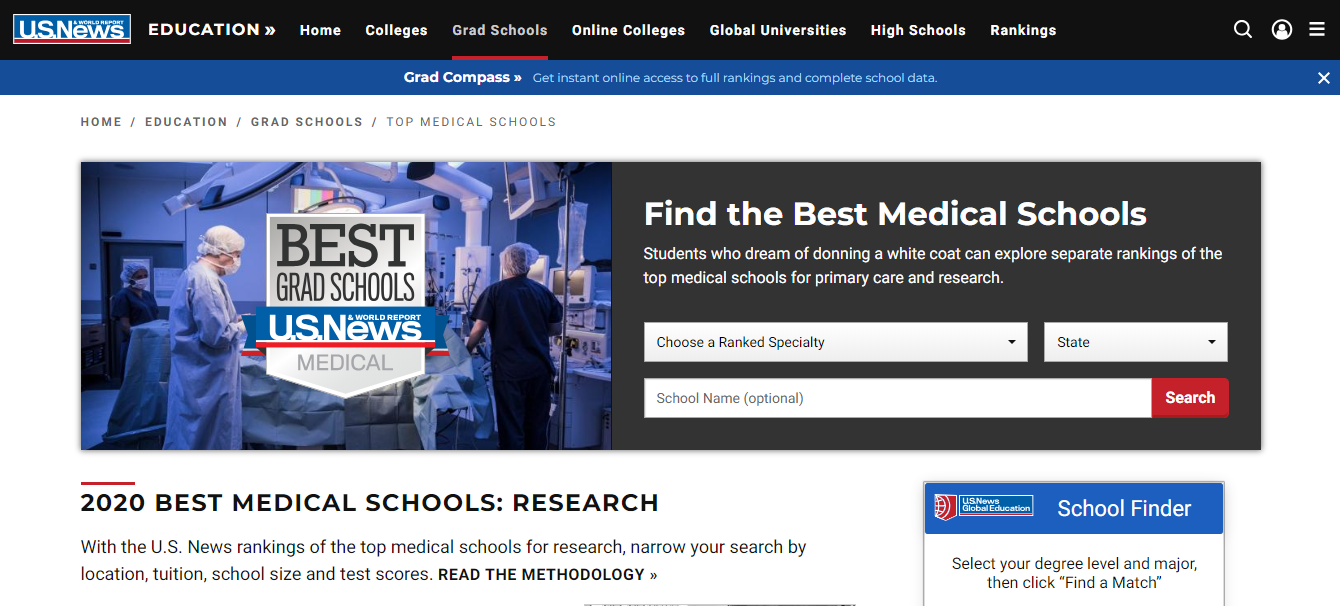
In putting together this list, we examined data on medical schools in the United States that are seen to be top tier. We looked at rankings based on both research and primary care. Although all of the schools on this list are excellent, we made sure to include schools with a variety of subtle strengths and weaknesses. This way, there are schools on the list that would appeal to students with all sorts of different aspirations in the medical field.
The Range of Medical School Tuition Costs
If you want to attend one of the best medical schools, you should expect that it will be expensive. In fact, these schools are typically between $45,000 and $60,000 per year for tuition alone. However, some schools will offer significantly lower tuition costs for students who were already residents of that state. UCSF and UCLA, for example, will offer tuition rates between $30,000 and $35,000 for in-state students and between $45,000 and $50,000 for out-of-state students. Surprisingly enough, these numbers are not very different from the national averages for all medical schools. Essentially, whether you go to one of the top medical schools or a mid-tier school, you can expect to pay about the same for tuition.
The 10 Best Medical Schools
The following are 10 of the best medical schools that are available to applicants. They are all highly ranked in both research and primary care and have many competitive programs.
1. Harvard University

Harvard University is the most selective medical school in the US regarding admissions, and for a good reason. It is ranked No. 1 in research and No. 12 in primary care. Established in 1782, this school has been a pioneer concerning educational models and needs in the health care industry. They value diversity in their students, and they prioritize not only medical education but also clinical care and biomedical research. The campus of the Harvard Medical School is the core of the Longwood Medical Area in Boston, Massachusetts. It is surrounded by multiple world-renowned hospitals and research institutions affiliated with the university.
Multiple well-known centers are affiliated with Harvard Medical School, including centers for primary care, magnetic resonance, palliative care, integrative medicine, and many more. The medical school also operates in conjunction with a variety of basic and social science departments at the university that enrich the quality of the research.
2. University of North Carolina -- Chapel Hill

If you are interested in a medical school that is at the top regarding primary care, you should consider applying to the University of North Carolina -- Chapel Hill. This medical school is ranked No. 1 for primary care, along with being No. 23 in research. At this school, you can elect to earn your MD or go for a combined degree program, such as the MD/Ph.D., MD/MBA, or a variety of others.
The Office of Research at this institution is involved with a great deal of collaboration with many other units and offices throughout the university. Students who enroll in the medical program will have ample opportunities in both research and exposure to patients. Since it is the top institution for primary care in the US, students who prioritize working with patients over research may consider this to be the best option possible.
3. University of California -- San Francisco
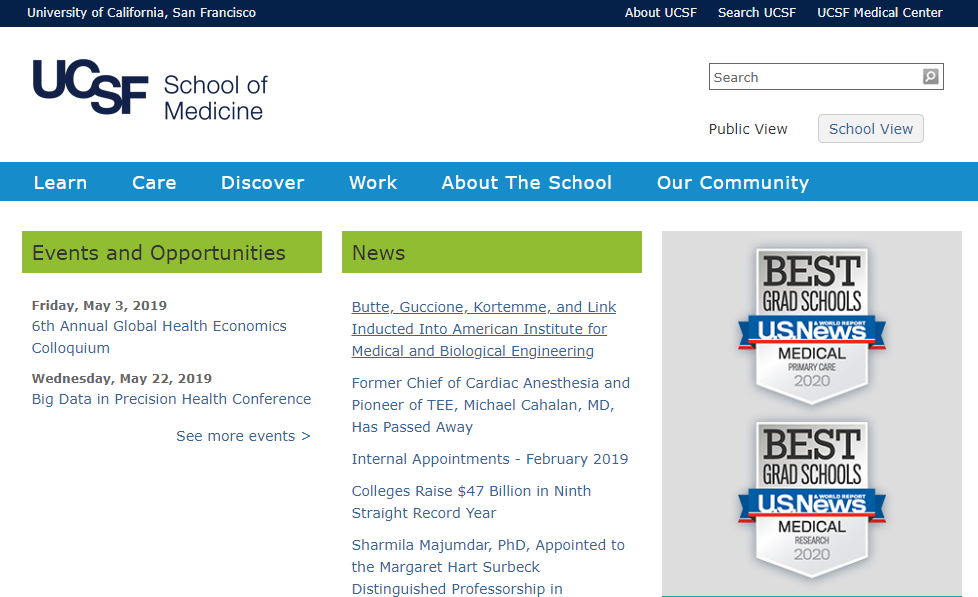
The University of California -- San Francisco is ranked No. 5 for research and No. 2 for primary care. Students at this institution will have opportunities to collaborate with prominent physicians at both the UCSF Medical Center and the San Francisco General Hospital. Additionally, they will have research opportunities available at the Clinical and Translational Science Institute. The mission at the school is to advance human health via research, education, public service, and patient care. Students who attend this institution can expect a well-rounded education, especially if they take advantage of everything on offer.
4. University of California -- Los Angeles

University of California -- Los Angeles is ranked No. 8 for research and No. 4 for primary care. Students in this school have opportunities in all sorts of research. Unified themes involve cardiovascular research, cancer research, neuroscience research, regenerative medicine research, and metabolism research. Students can participate in clinical trials. They can also become involved in different research experiments that can potentially change the landscape of the medical field. Community engagement is also a priority at this institution. Students here can expect a little bit of everything when they are trying to complete their medical educations.
5. University of Pennsylvania
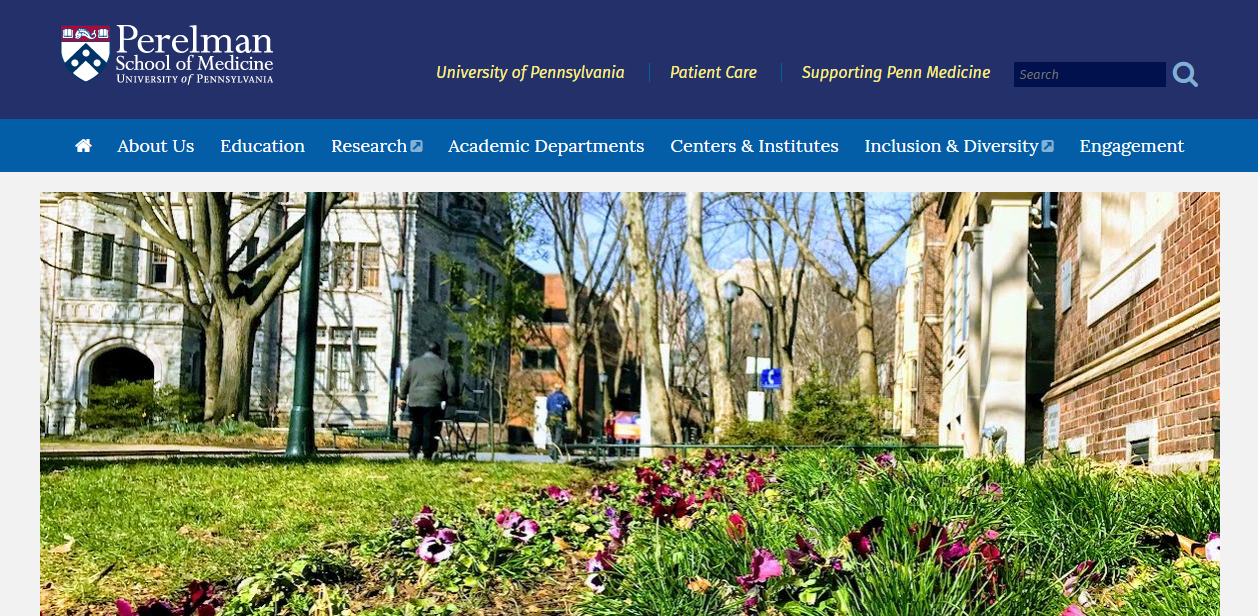
The University of Pennsylvania is ranked No. 6 for research and No. 8 for primary care. People know this institution well for its biomedical research core facilities, as well as research training programs for students. Students can become involved in clinical trials and participate in research projects at different centers and institutes that are interdisciplinary. Plus, opportunities for collaboration with other departments at the university are available.
Founded in 1765, the University of Pennsylvania is one of the oldest medical schools in the United States. Paradoxically, it prioritizes heritage and tradition along with innovation. This institution has connections with multiple hospitals in the area. These include the Hospital of the University of Pennsylvania, Chester County Hospital, Lancaster General Hospital, Penn Presbyterian Medical Center, and Pennsylvania Hospital. As such, students will have ample opportunities to work with diverse groups of patients.
6. Washington University in St. Louis
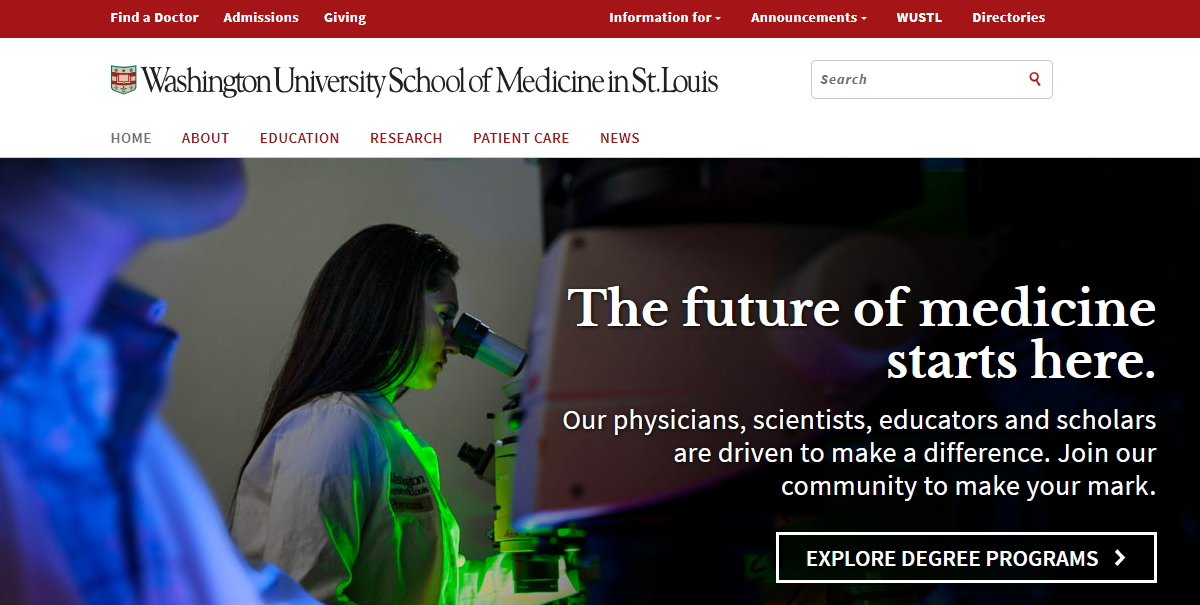
Washington University in St. Louis has been ranked No. 8 for research and No. 10 for primary care. People know this medical school for a variety of options. These include 13 degree programs and 76 different clinical specialties and subspecialties. Students who decide to pursue their medical education at this university can expect a challenging environment with plenty of support from their surroundings. There are more than 90 training programs at the medical school in terms of residencies and fellowships. The degree programs at the medical school consistently achieve top ranks in the nation.
7. Johns Hopkins University

Johns Hopkins University, ranked No. 2 for research and No. 26 for primary care, is known for innovation. People also know this school for being at the forefront when it comes to discoveries in the medical field. They offer a variety of programs for students, including not only the MD program but also dual and combined degree programs. These include the MD/MBA, MD/Ph.D., MD/MPH, and MD/MSCHCM. They have many opportunities when it comes to continuing medical education and research in different areas of the medical field.
Professionals know this institution very well for research in both state-of-the-art lab facilities and hospital settings with clinical trials. Faculty and alumni of this university hold a total of 2,478 active issued patents. They are also the entrepreneurs of 94 different startups that have associations with the school of medicine. The university is home to 782 labs and 120 core facilities. Additionally, there are 33 operating rooms with all of the latest medical technology.
8. Stanford University

Stanford University has achieved ranks of No. 3 for research and No. 32 for primary care. The entity of Stanford Medicine contains three different organizations. These include not only the Stanford School of Medicine but also Stanford Health Care and Stanford Children's Health. The School of Medicine is located in close proximity to other resources of the university. These happen to include the Law and Business Schools, as well as engineering and other science facilities. Collaboration is a major theme when it comes to research at the school. The School of Medicine uses all of the available resources to make the best advances possible. The school prioritizes community engagement for students, as well as getting the best primary care education possible.
9. Mayo Clinic School of Medicine
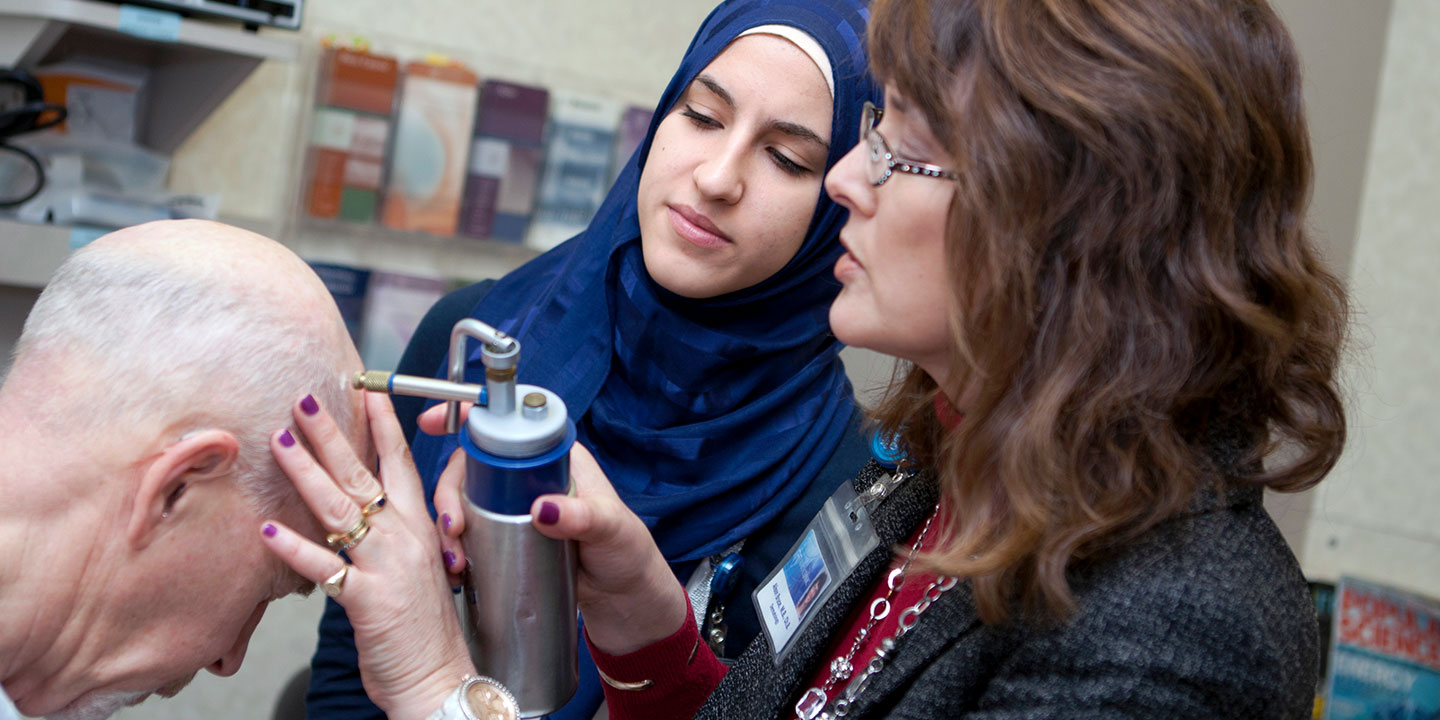
The Mayo Clinic School of Medicine, ranked No. 6 for research and No. 32 for primary care, has been around for over 150 years. The entire time this institution has been present, the primary goal of the professionals here has been to provide outstanding care for all patients. They also offer educational programs that continue medical success into future generations.
There is a huge variety for students who study here. This includes 110 different programs, rotations, and internships in the Health Sciences. Students can opt to get an MD, an MD/Ph.D., or another advanced doctoral degree in biomedical sciences. There are also more than 500 continuing education courses that are available every single year for medical professionals, as well as clinical rotations that are elective for visiting medical students. The facilities are state-of-the-art, and students who attended the school can expect a comprehensive medical education.
10. Duke University
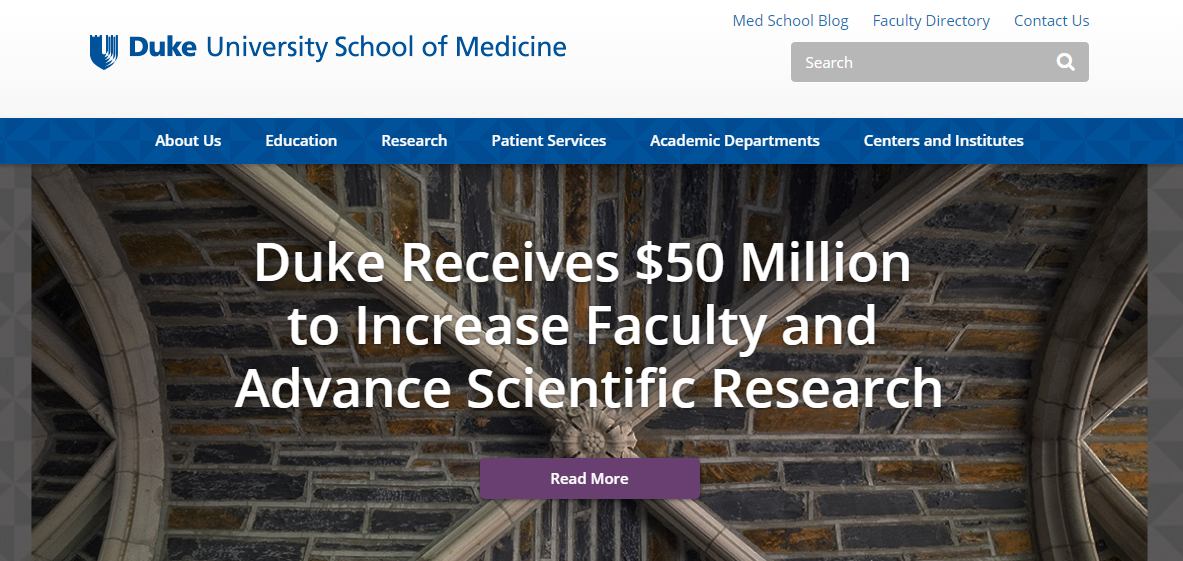
Duke University has achieved a ranking of No. 10 for research and No. 26 for primary care. The medical school has connections with Duke University Hospital, Duke Regional Hospital, Duke Primary Care, Duke Raleigh Hospital, and many more. Along with the Duke University Health System and Duke University School of Nursing, it is a part of Duke Health.
Most medical schools have students study the basic sciences for two years. In contrast, Duke has them study these sciences for one year. This way, students can start caring for patients during their second year of studies. They can then devote their third year to a research project. This university is home to 23 basic and clinical science departments. They also have a multitude of centers and institutes with which the medical school has strong connections.
So Which Medical School Is the Best Choice?
After going through all of this information, you may be wondering which of these medical schools is best for your purposes. The truth is that we cannot answer that question. Though these are 10 of the best medical schools, no one school will be best for everyone. You need to consider which medical school will be best for your particular aspirations. Picking the best school for you and your interests is also important. Ideally, you will want to go to a school with strong programs in your area of interest.
However, you need to remember that it is not realistic to be picky about which of the best medical schools accepts you. Getting into any medical school is a huge accomplishment, and worth celebrating. At the end of the day, any accredited MD program will give you what you need to be a wonderful physician. As long as you make the most of it, you can harness great resources anywhere!

Leave a Reply